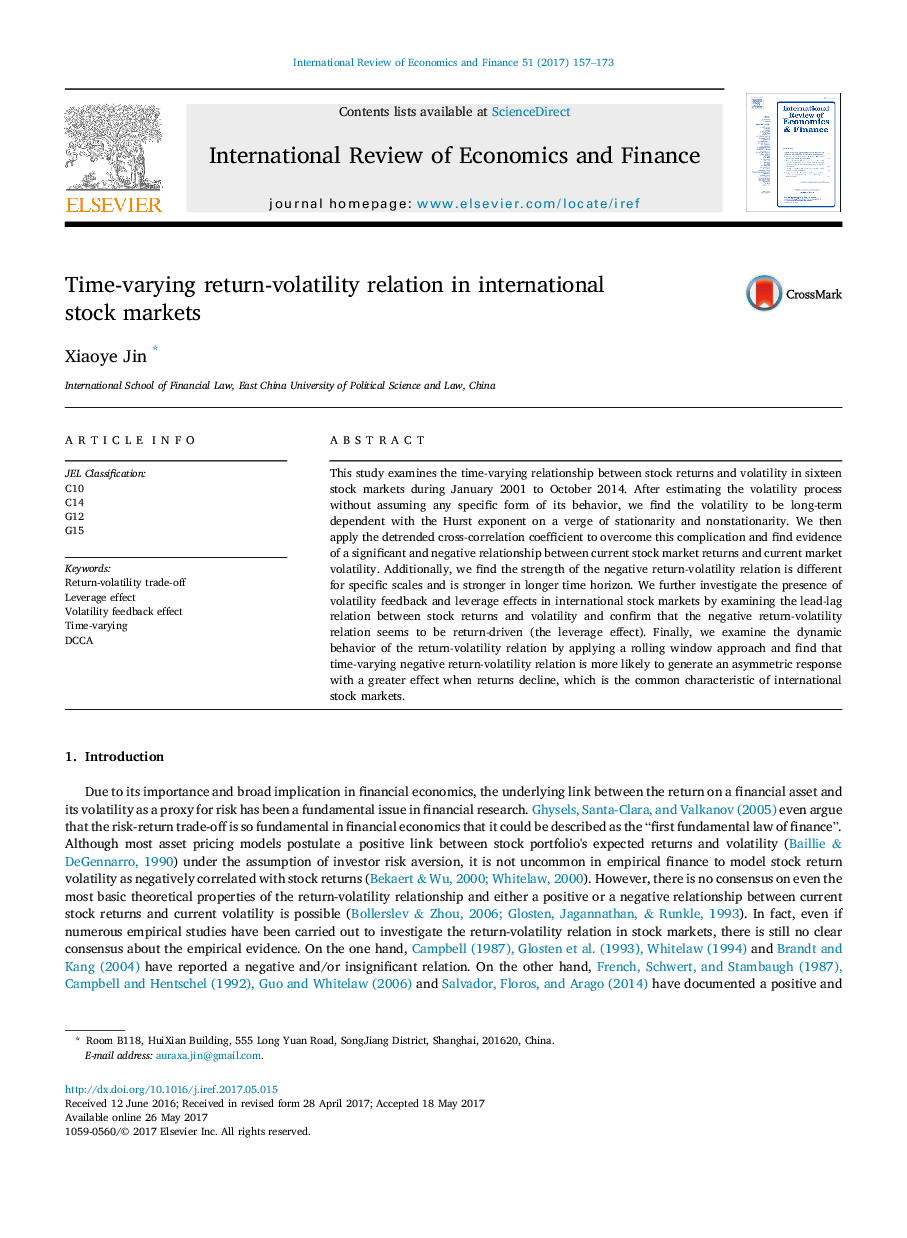| Article ID | Journal | Published Year | Pages | File Type |
|---|---|---|---|---|
| 5083023 | International Review of Economics & Finance | 2017 | 17 Pages |
Abstract
This study examines the time-varying relationship between stock returns and volatility in sixteen stock markets during January 2001 to October 2014. After estimating the volatility process without assuming any specific form of its behavior, we find the volatility to be long-term dependent with the Hurst exponent on a verge of stationarity and nonstationarity. We then apply the detrended cross-correlation coefficient to overcome this complication and find evidence of a significant and negative relationship between current stock market returns and current market volatility. Additionally, we find the strength of the negative return-volatility relation is different for specific scales and is stronger in longer time horizon. We further investigate the presence of volatility feedback and leverage effects in international stock markets by examining the lead-lag relation between stock returns and volatility and confirm that the negative return-volatility relation seems to be return-driven (the leverage effect). Finally, we examine the dynamic behavior of the return-volatility relation by applying a rolling window approach and find that time-varying negative return-volatility relation is more likely to generate an asymmetric response with a greater effect when returns decline, which is the common characteristic of international stock markets.
Related Topics
Social Sciences and Humanities
Economics, Econometrics and Finance
Economics and Econometrics
Authors
Xiaoye Jin,
